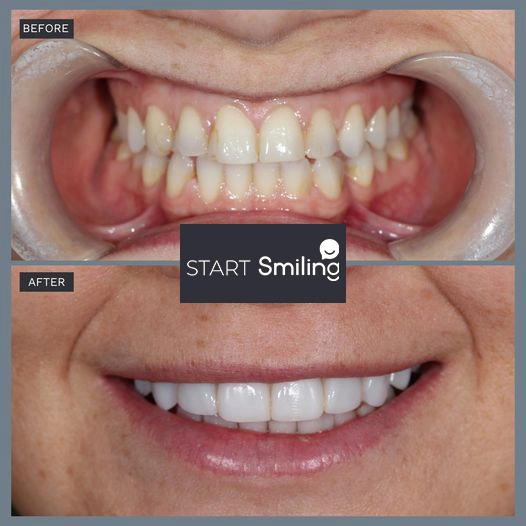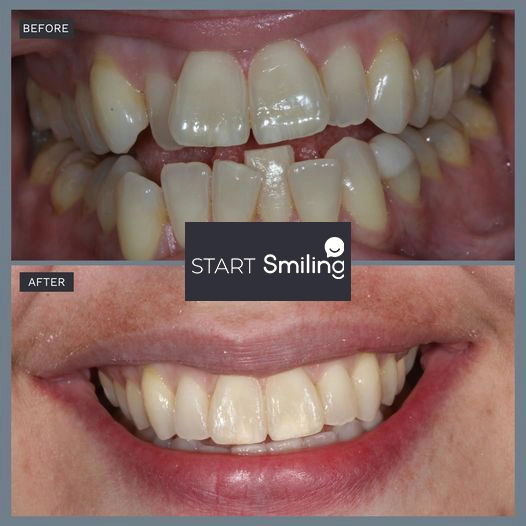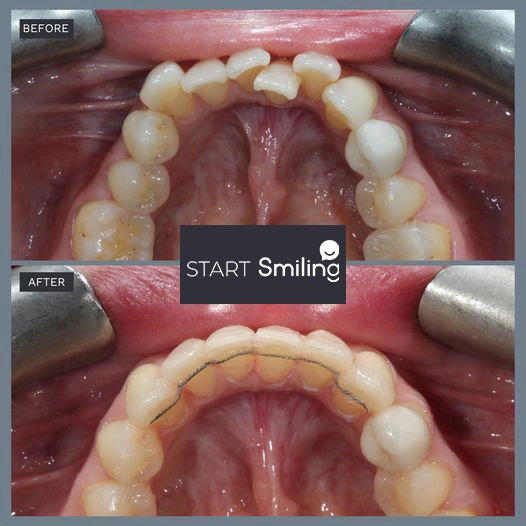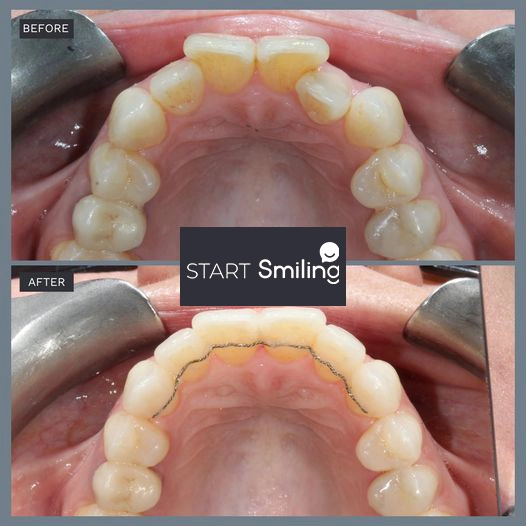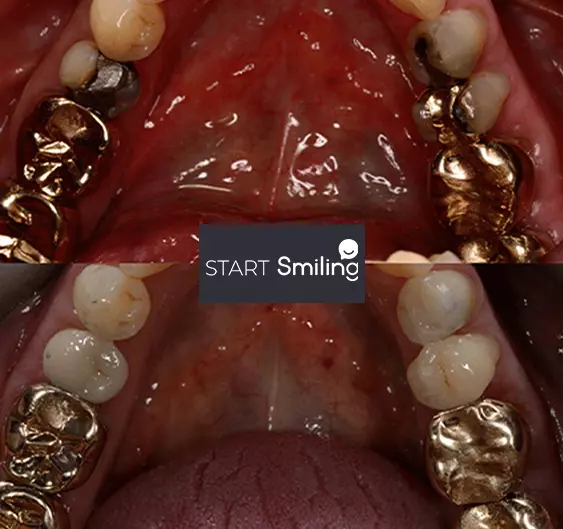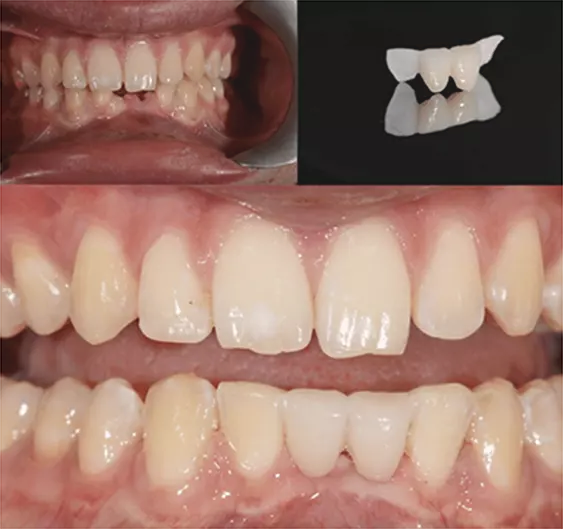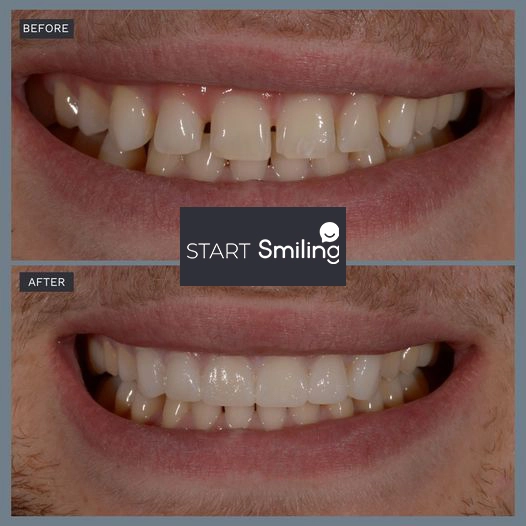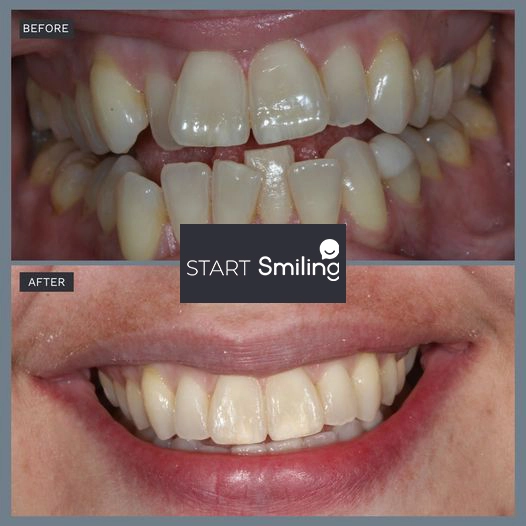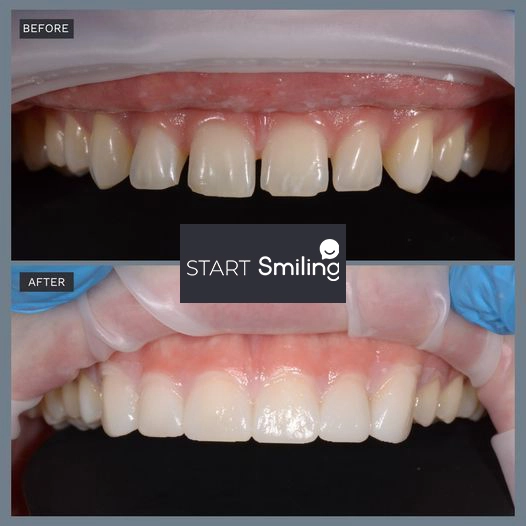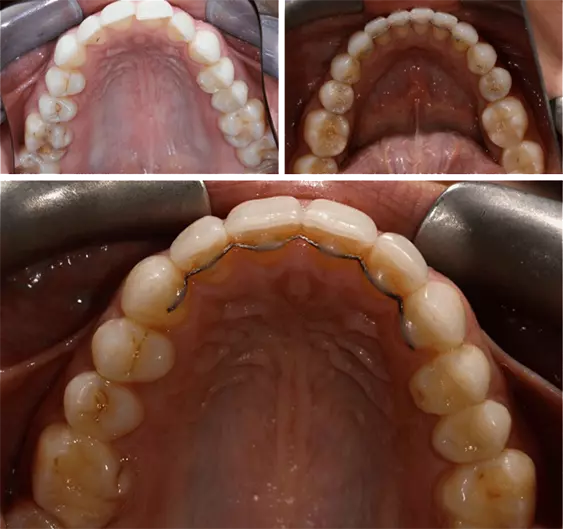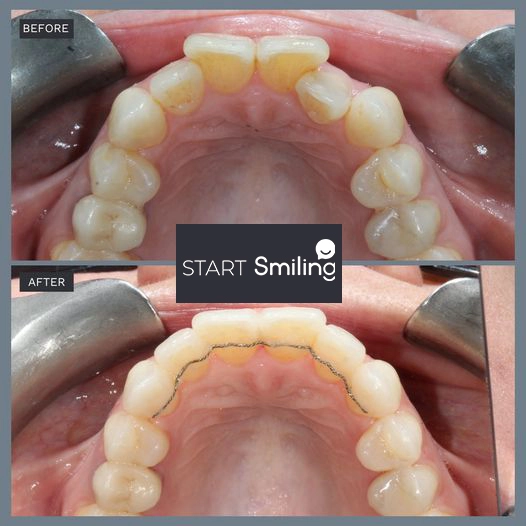Dental Bridges
At Start Smiling we have many ways of replacing missing teeth, not only for cosmetic reasons but also because a gap can destabilise the bite, stress adjacent teeth or trap food.
The treatment options available when choosing to replace missing teeth will be based on how many teeth are missing and the state of your other teeth. At Start Smiling we fill the gaps caused by missing teeth in one of three ways: implants, partial dentures or bridges.
A bridge, in simple terms, is like having 2 crowns joined together with a false tooth in-between. This is cemented onto the teeth either side of the gap and the false tooth ‘bridges the gap’. This is a simple treatment which should last many years.




